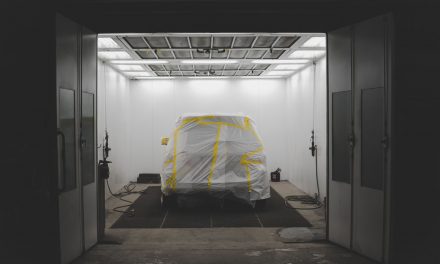I get commissions for purchases made through links in this post.
The tires on your car are one of the most crucial parts of your car: they perform the oft-undervalued job of moving the vehicle and its load from place to place, as well as taking much of the impact of uneven roads. For optimum performance and safety, the tires must remain inflated correctly. However, some factors beyond human control lead to the loss of tire pressure.
A tire loses air pressure in cold weather as the drop in temperature increases the density of the air inside the tire. The denser air takes up less space inside the tire, leading to a pressure drop. A tire loses between 1 and 2 PSI for every 10°F (5.6°C) temperature drop.
This piece will examine the effect of temperature changes on tire pressure and how to maintain safe tire pressures during the winter.

How Temperatures Affect Tire Pressure
Typically, when the Tire Pressure Monitoring System (TPMS) on your vehicle alerts you to a pressure drop in one or more tires, you rush to inspect the tire for external damage.
Common causes of pressure loss in tires are:
- Leaking valves
- Bent wheels
- Nails
- Tire damage
However, sometimes the damage isn’t external.
After inspecting the tires and finding no apparent cause of the TPMS warning, the likely reason you lose air pressure is temperature.
Temperature affects the density of air particles. Heated air expands, pushing up against the tire walls, and causing increased air pressure. Cool air contracts, collecting together as it grows denser, leading to lower tire air pressure.
Tire pressure changes with the rise and drop of temperatures: A 10°F (5.6°C) temperature drop leads to a decline of 1 to 2 PSI (6.9 to 13.8 kPa); a 10°F (5.6°C) temperature increase causes a tire pressure increase of 1 to 2 PSI (6.9 to 13.8 kPa).
The rate of PSI loss increases with the pressure requirements of a tire. Heavier trucks and buses, whose tires require more air pressure, lose more tire air pressure than lighter vehicles like light passenger cars.
Drastic temperature fluctuations cause sharp changes in tire pressure, which can trigger a TPMS warning. However, the changes in tire pressure caused by smaller temperature drops are often not severe enough to cause a TPMS warning. The TPMS light typically illuminates when the tire has lost at least 25% of air pressure.
If you pump your car tires to 35 PSI (241 kPa), the air pressure would have to drop to 26.25 PSI (180 kPa) to trigger alarm bells. A temperature drop alone is unlikely to account for an 8.75 PSI (60 kPa) loss in air pressure.
For a tire to lose 8.75 PSI (60 kPa), the temperature would have to drop by around 90°F (50°C). Temperatures can fluctuate a lot during winter and spring, but swings of such a nature are uncommon. Therefore, if a temperature drop causes a TPMS warning, the tire is likely leaking or wasn’t inflated to the correct PSI.
- COMPLETE GUIDE TO YOUR TIRE SIZE (WITH INFOGRAPHIC AND IMAGES)
- TRUCK TIRES SHOULDN’T BE USED ON TRAILERS: TOP 4 REASONS WHY
- TOP 2 REASONS YOU SHOULD HAVE ALL FOUR TIRES BE THE SAME BRAND
How To Solve Tire Pressure Drops Caused by Temperature
The simple solution to tire pressure drops caused by temperature is reinflation. A tire doesn’t necessarily need to look flat for more air, so purchase a tire pressure gauge to monitor tire (Paid Link) pressure when temperatures drop.
As mentioned above, the TPMS system will only alert you to pressure drops beyond 25% of the standard PSI. However, since it’s nearly inevitable that your car’s tires will lose pressure when it gets cold, purchase a cheap tire pressure gauge (Paid Link) to monitor your tires.
Reinflate the tires as required at home or a service station. Check the tire pressures, including the spare, at least every couple of weeks as the temperature decreases.
Dangers of Driving on Under-Inflated Tires
Some advise drivers not to worry about reinflating their tires after a loss of temperature-related air pressure. As the tires rotate, heat rises in the tire, restoring tire pressure to normal. Relying on motion-generated heat to restore tire pressure may work, but it isn’t safe.
The dangers of driving on under-inflated tires include:
- Tire failure: Underinflation increases the amount of sidewall touching the road. The increased friction raises tire temperatures, causing faster wear and elevating the likelihood of a blowout.
- Poor handling: Under-inflated tires reduce cornering stability and affect steering precision; such tires lower braking performance, especially on slippery winter roads. The compromised handling caused by underinflation increases the possibility of an accident.
- Poor consumption: Under-inflated tires increase rolling resistance, prompting the engine to work harder to push them along the road. The extra effort increases fuel consumption.
There’s little benefit from using under-inflated tires (outside of off-roading). It takes next to no time to check your vehicle’s tire pressures and top up the lost air pressure.

How To Prevent Pressure Loss on Cold Days
The main, and best way to prevent tire pressure loss on cold days is For instance, parking your car in a heated garage rather than outside will shield the tires from low temperatures.
Debunking the Nitrogen Myth
A popular solution by car owners is filling the tires with nitrogen. Filling car tires with dry nitrogen is becoming increasingly popular as the gas maintains tire pressure better than air. Nitrogen seeps through the rubber slower than air, resulting in more constant tire pressure over extended periods.
It reduces the need to keep checking tire pressures and increases tire efficiency. Furthermore, unlike oxygen, nitrogen doesn’t react with the tire rubber, increasing the tire’s longevity. Also, the moistureless nitrogen reduces the corrosion rate on your wheels.
However, using nitrogen doesn’t prevent the loss or gain of tire pressure due to temperature changes. Nitrogen and air inside a tire react similarly to temperature fluctuations.
Conclusion
Temperature changes increase or reduce the tire pressures on your vehicle: an increase in heat bumps up tire pressure; cooler conditions lower tire pressure. Therefore, increase the frequency of tire pressure checks during winter, as your tires are more susceptible to pressure drops.
There’s little you can do to prevent temperature-induced tire pressure losses except parking your vehicle in a heated garage. Avoid driving your car with under-inflated tires, as you risk getting into an accident.





